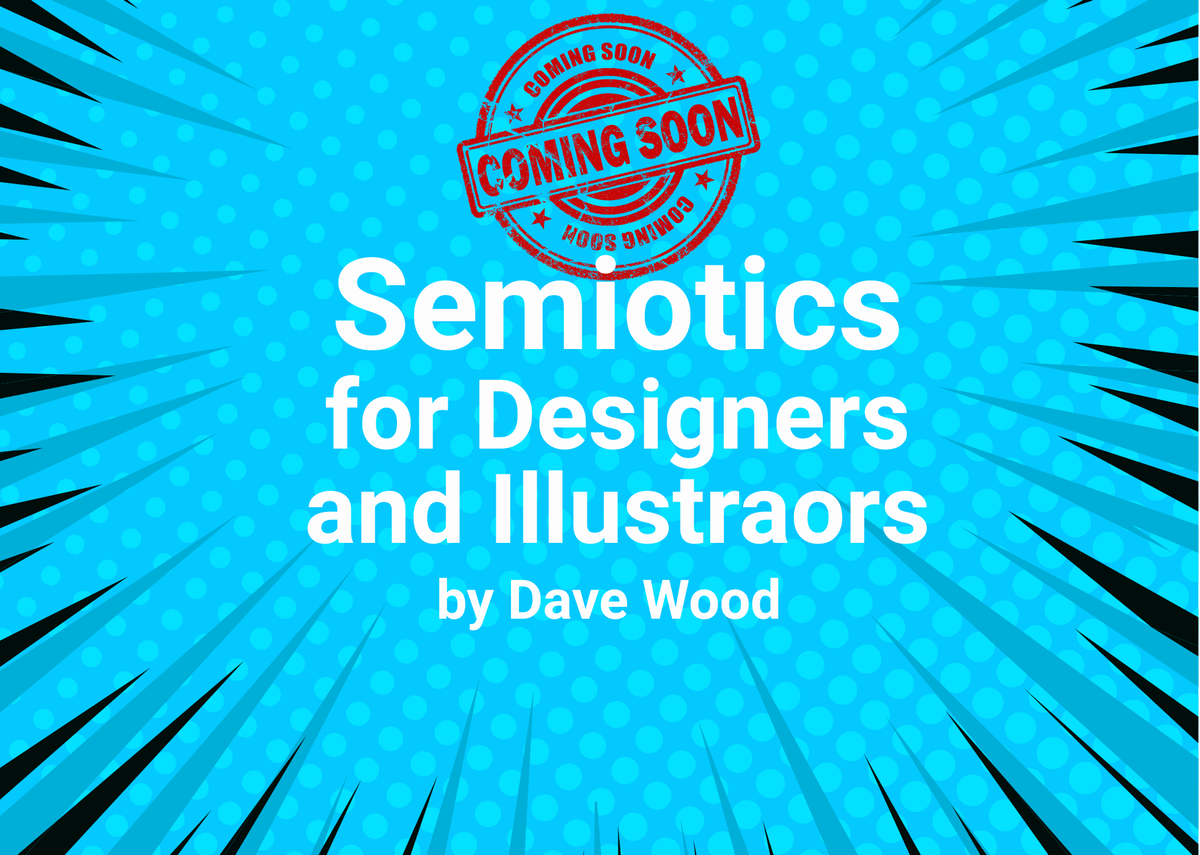002: I answer the "So What?" question…
First raw and chaotic draft


Semiotics for Designers and Illustrators (2026)
I think the “so what?” question is a great leveller for any thesis. A close cousin to this question is the “why?” question. So why write a design book on applying the pragmatic semiotic theory of Charles Sanders Peirce? What will illustrators and designers learn from it that can help them in their day-to-day careers? Obviously in my book I answer these points fully, but as a teaser I’ll give you the simplest answer…
…understanding pragmatic semiotic-sign action (Semiosis) can help you enhance how you visually communicate to your target audience.
Yes, …pragmatic…semiotic…sign-action!
There are two main semiotic theories: Ferdinand de Saussure’s Semiology (which is linguistically based), and Peirce’s pragmatic semiotic theory. If you’re still reading this and wondering… ”Semiotics? Why? So what?” then let me give you some quick context. Semiotics is the study of “signs.” No, not signage or way finding.
Humans are Symbolic abstract thinkers who use one thing as a “semiotic sign” for something else. Saussure’s better known Semiology is philosophically a Structuralist, linguistic-based theory. Roland Barthes’ writing follows this tradition. You may have already heard of the signifier and the signified? This is a Structuralist semiotic sign. One thing (the signifier) actually means this other thing (the signified).
You already tacitly know that when you see the colour red (the signifier) it means danger (the signified). But in reality ‘red’ is not pre-set to mean ‘danger.’ Like any colour it can mean different things to different people in different contexts. In my book’s introduction I quickly explain the limitations of this dyadic (twos) approach to semiotics in visual communication. This is where I bring in my book’s mystery guest - your target audience.
Peirce’s own concise summary of what a semiotic sign is states that nothing is a semiotic sign until interpreted as a sign for something else. Therefore to enhance how you visually communicate, my book’s “so what?” answer brings you illustrators and designers into what design professor Jorge Frascara calls a communicational situation with your target audience. Why?
Peirce wrote his pragmatic semiotic theory in the USA at the same time Saussure was developing his Semiology in Europe, at the turn of the 20th century. Peirce was the founding father of Pragmatism - a new school of action-based philosophy. Pragmatic semiotic sign-action triangulates how meaning can be visually communicated in a determination flow. You will see in my book I explain Peirce in plain language we can describe this determination flow as a concept to be visually communicated which depends on how your visual language represents it to your audience.
These visual semiotic signs have an effect on the audience’s perception for them to interpret what is meant. This is the semiotic determination flow triadic cycle between concept > representation > interpretation > concept and so on until what you connotatively visually communicate is understood. My book will help you to apply Semiosis into your existing creative practice, to semiotically enhance your visual language decisions to your target audience.
How’s that for a “so what?” answer?
If you want to be amongst the first to read my book in 2026 I will be posting some exclusive Bloomsbury discount codes in this newsletter nearer publication date.



